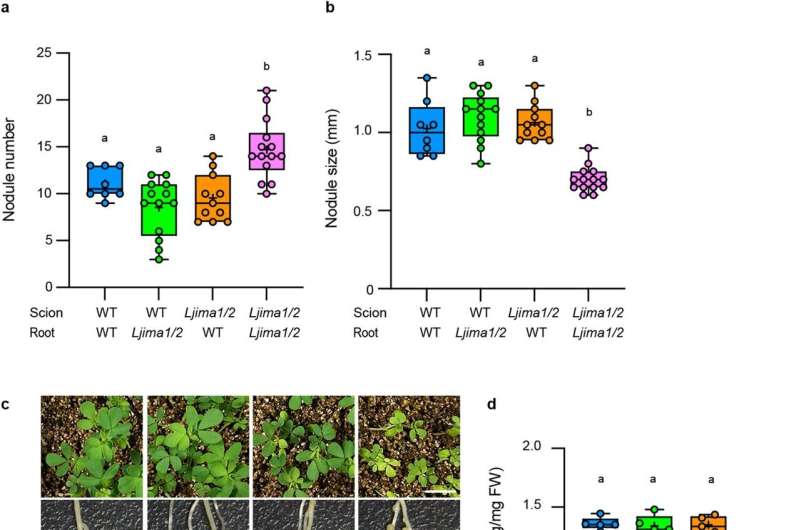This article has been reviewed according to Science X's editorial process and policies. Editors have highlighted the following attributes while ensuring the content's credibility:
fact-checked
peer-reviewed publication
trusted source
proofread
Legume model plant study clarifies underlying mechanism of iron acquisition in response to nitrogen

Leguminous plants have a mechanism (rhizobial symbiosis) to efficiently acquire nitrogen, which is an essential macronutrient for growth, through the nitrogen-fixing bacteria rhizobia. Root nodules are organs on plant roots that facilitate the symbiotic relationship.
Rhizobia colonize these nodules and fix nitrogen by converting nitrogen from air into ammonia. Iron is needed for the enzymes that catalyze nitrogen fixation; however, where and how iron is transported to the nodule and used for nitrogen fixation is largely unknown.
In a new study, published in Nature Communications, researchers used the legume model plant Lotus japonicus to perform a transcriptome analysis based on the nitrogen status in the plant body during the rhizobial symbiosis process. IRON MAN (IMA) peptides consisting of approximately 50 amino acids were identified, which function systemically (shoot and root systems) to collect iron into the nodules following rhizobial infection.
Furthermore, the function of IMA peptides was analyzed in L. japonicus and Arabidopsis thaliana, a plant devoid of rhizobial symbiosis. In both plant species, the IMA peptides maintained nitrogen homeostasis by obtaining iron in response to increased nitrogen concentrations in the plant body, thereby regulating plant growth.
The research group previously identified a mechanism for regulating rhizobial symbiosis in response to the presence of nitrogen in the soil. This study builds on previous studies by clarifying the underlying mechanism of iron acquisition in response to nitrogen, which provides further insight into the mechanisms of plant adaptation to the environment.
These findings are promising for the development of new technologies that contribute to a sustainable society by maximizing the capacity of plants for microbial symbiosis in terms of nutrient use.
More information: Momoyo Ito et al, IMA peptides regulate root nodulation and nitrogen homeostasis by providing iron according to internal nitrogen status, Nature Communications (2024). DOI: 10.1038/s41467-024-44865-4
Journal information: Nature Communications
Provided by University of Tsukuba



















